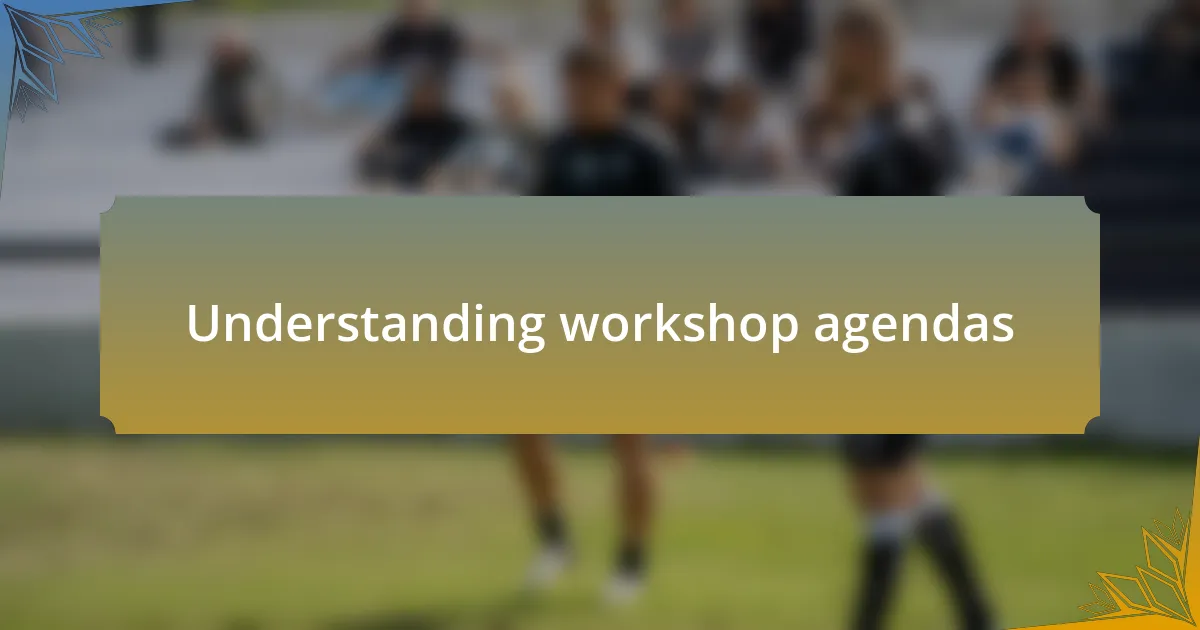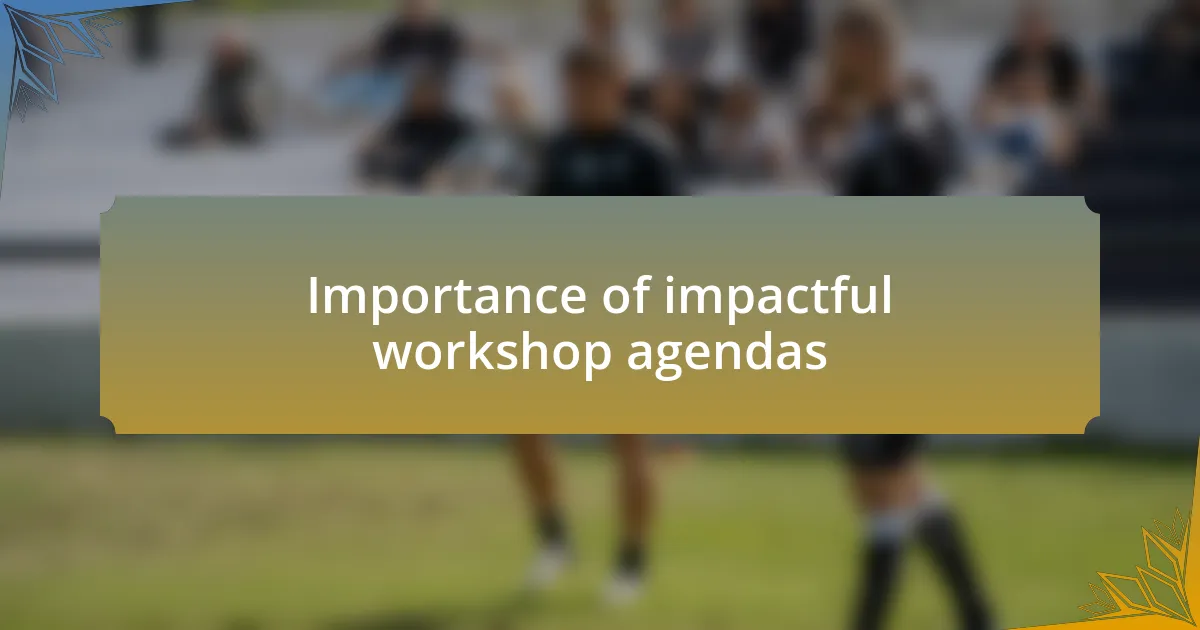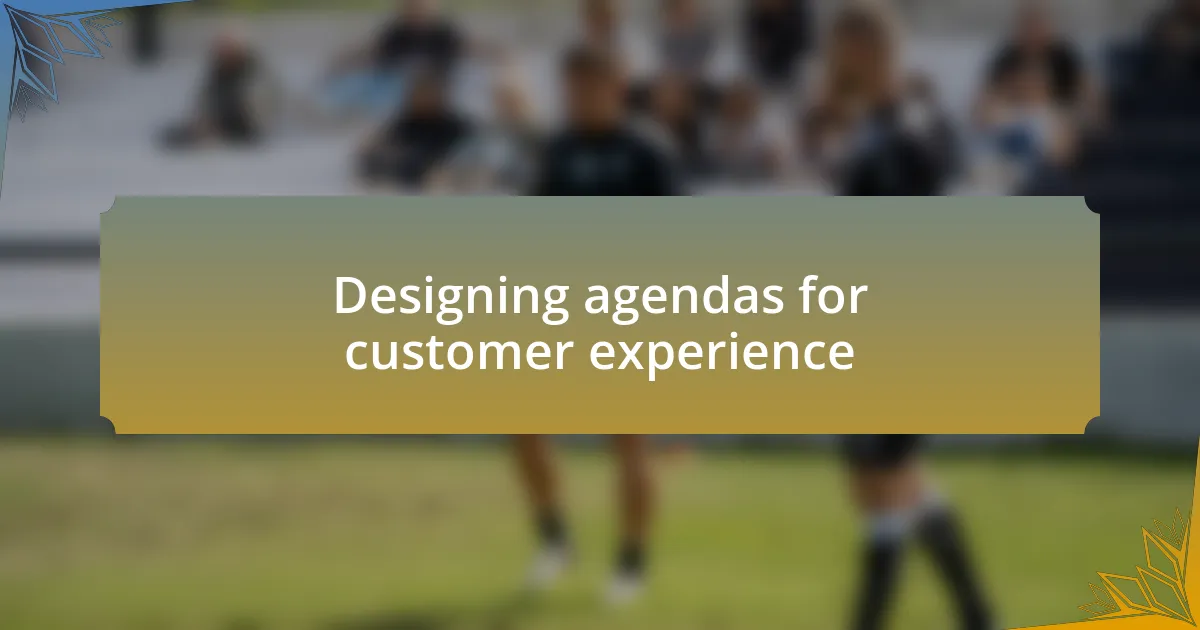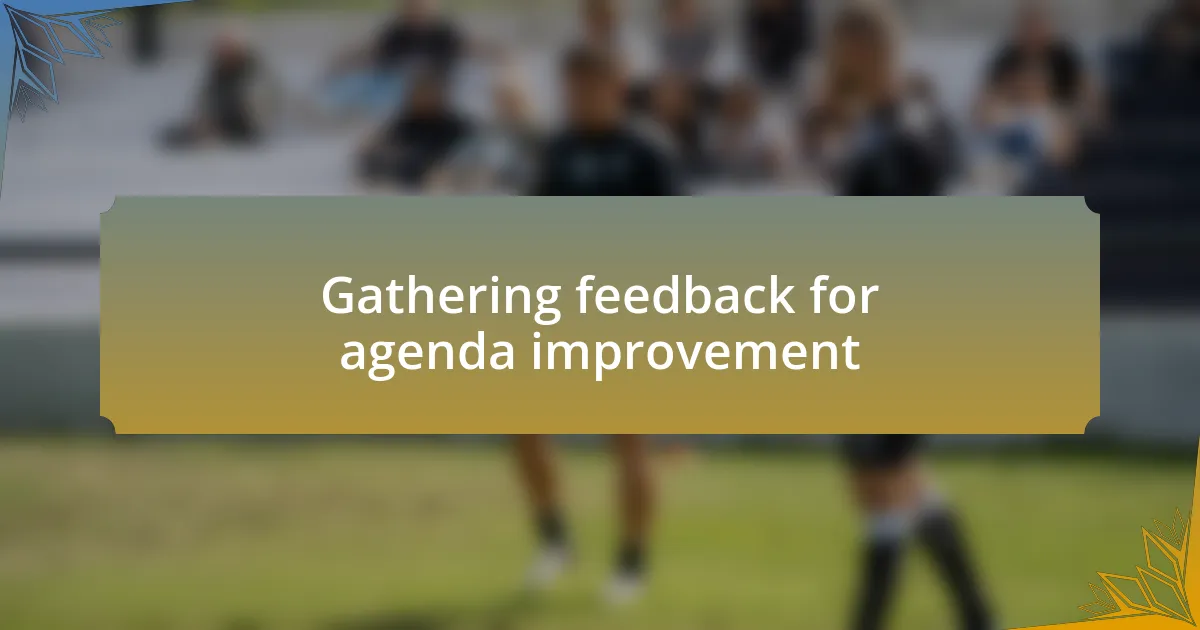Key takeaways:
- A well-structured workshop agenda enhances engagement, accountability, and clarity, leading to a more productive session.
- Interactive elements in the agenda, such as breaking into group discussions, foster lively conversations and creativity.
- Involving participants in the agenda creation process increases their investment and the relevance of discussions.
- Gathering feedback after workshops is crucial for continuous improvement and helps tailor future agendas to participant needs.

Understanding workshop agendas
Workshop agendas serve as the roadmap for any productive session, shaping the flow of discussions and activities. I remember the first time I attended a workshop where the agenda was too loose—chaos ensued, and valuable time slipped away. Have you ever been in a situation where a lack of structure turned a potentially great exchange into a confusing mess?
A well-crafted agenda not only delineates the topics but also sets the tone and expectations for participants. I once introduced a concise agenda that included time slots for brainstorming and feedback, and the energy in the room was palpable. Doesn’t it feel empowering to know exactly what to expect and when?
Moreover, a strong agenda enhances engagement and accountability. I’ve seen participants thrive when their roles and expectations are clearly outlined, leaving less room for ambiguity. Isn’t it reassuring to walk into a workshop knowing you have a meaningful contribution to make? By prioritizing clarity and structure, organizers can create a more impactful experience for everyone involved.

Importance of impactful workshop agendas
When I reflect on workshops I’ve led, the importance of a well-organized agenda becomes strikingly clear. For instance, during one workshop on customer engagement, I divided the agenda into distinct sections that focused on interactive group discussions rather than lengthy presentations. This shift not only kept participants engaged but also sparked lively conversations that I’ll never forget. Are we all craving more interaction in our learning environments?
A focused agenda acts as a powerful conduit for meaningful discussions, helping to align participants’ expectations with the overall goals. In a workshop where I utilized a themed agenda, everyone arrived with a shared sense of purpose. It transformed our time together from a routine meeting into a genuine collaborative experience, where ideas flowed freely, and creative solutions emerged. Isn’t it fascinating how a little structure can unleash creativity?
Additionally, a thoughtfully constructed agenda demonstrates respect for participants’ time and contributions. I’ve been in scenarios where unclear objectives led to frustration, and I’ve learned firsthand that clarity motivates attendees to engage fully. Creating an agenda that highlights key discussion points fosters a sense of ownership among participants. Who wouldn’t want to be part of a session where they feel their input directly influences the outcome?

Designing agendas for customer experience
When designing agendas specifically for customer experience workshops, I always start by identifying the key objectives and the audience’s needs. For instance, in one session aimed at improving customer feedback systems, I integrated real-life case studies that resonated with the participants. This not only provided context but fostered a sense of urgency to tackle the issues at hand. How can we create space for conversations that truly matter in our customer experience strategies?
Inclusion is another crucial aspect of crafting insightful agendas. I once hosted a workshop where we invited participants to propose topics they were passionate about. The result was an agenda that buzzed with energy, allowing us to tap into a wealth of knowledge across various sectors. This experience reinforced my belief: when attendees feel empowered to steer conversations, the learning becomes rich and varied. Don’t you think people are more invested when they discuss what truly resonates with them?
Balancing structure with flexibility has proven vital in my experience. During a customer journey mapping workshop, I allowed time slots for spontaneous discussions as new ideas emerged. This approach turned a rigid structure into a dynamic and engaging space, showcasing how dialogue could evolve in real-time. Isn’t it exciting when plans adapt organically to participant input, creating a more customized experience?

Gathering feedback for agenda improvement
Gathering feedback after each workshop has been essential for enhancing my agenda-building process. I remember a session where I distributed anonymous surveys, asking participants to rate each segment and share their thoughts on improvements. The feedback revealed that while some topics resonated well, others needed more depth. It was an eye-opener—direct input transformed my approach for future workshops. How can we ignore the voice of our participants when they’re the heart of the experience?
I also make it a point to engage in follow-up conversations. After one particularly intense workshop, I reached out to a few attendees for a more in-depth discussion about their experiences. This not only deepened my understanding but also fostered relationships that encouraged continued dialogue about their needs. Isn’t it fascinating how personal conversations can uncover insights that a survey might miss?
Another strategy I implemented was creating a feedback loop, where participants could suggest improvements throughout the workshop. During one event, a participant’s offhand comment led to a reshaping of a later discussion segment. This spontaneity added a freshness that formal agendas often lack. Isn’t it amazing how flexibility in gathering feedback can lead to richer experiences for everyone involved?